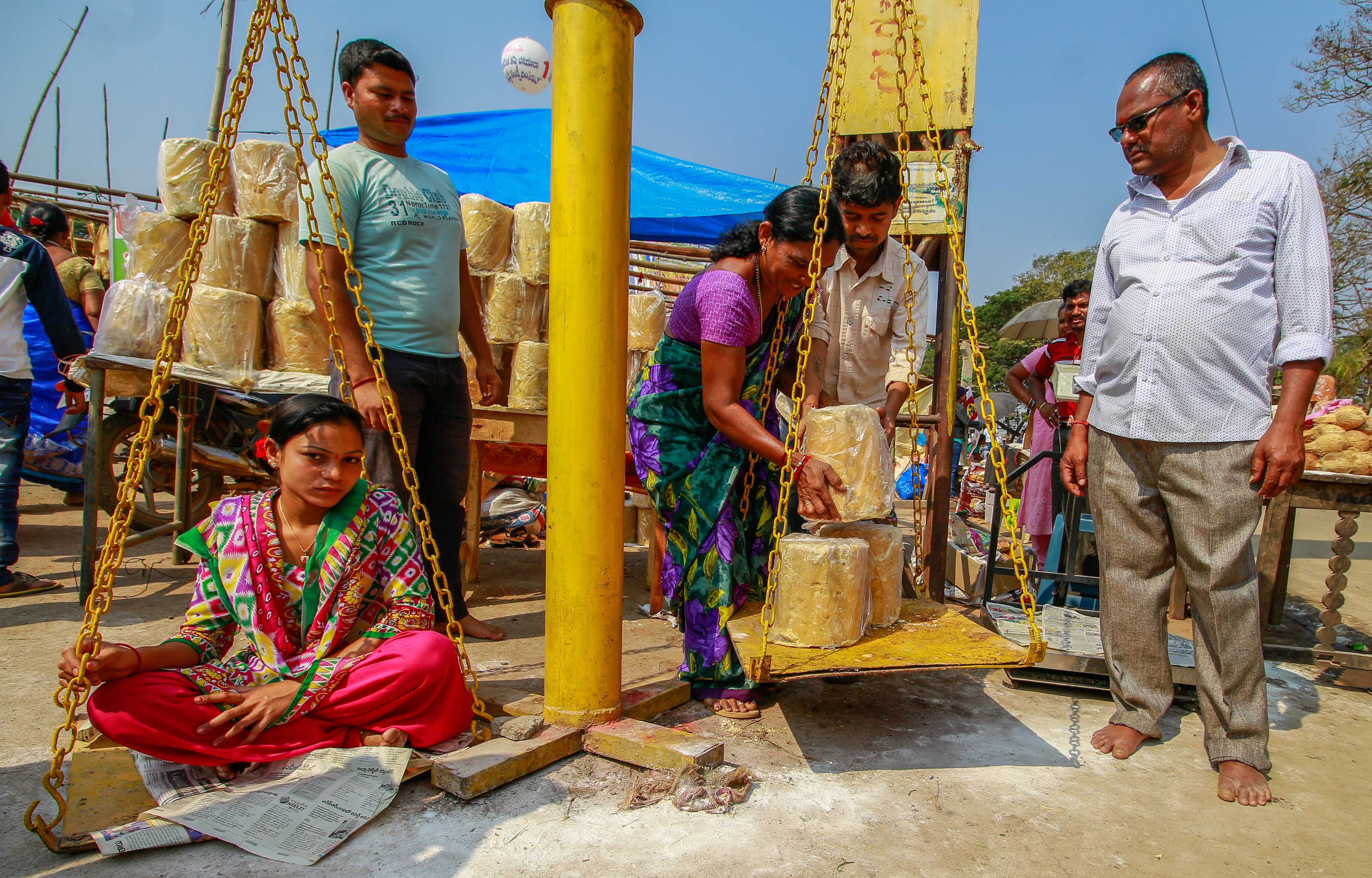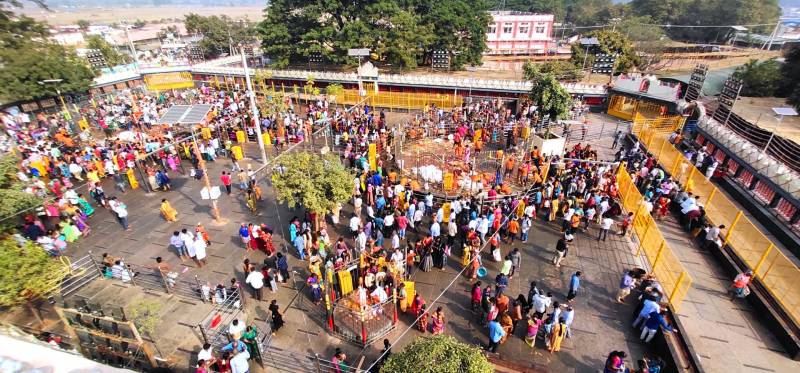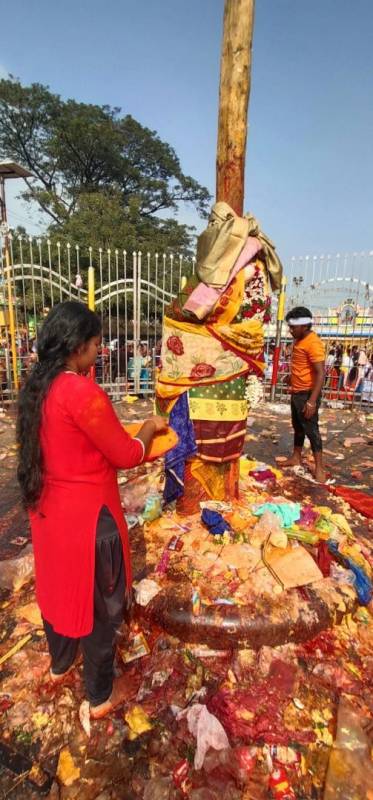Medaram Jatara: Remembering the valour of Sammakka and Saralamma
By Newsmeter Network
Warangal: The biennial Sammakka–Saralamma Jatara in Tadvai of Mulugu district is one of the largest congregations of devotees in India. More than one crore devotees from across the country visit the tiny village of Medaram during the four-day event. This year, the Jatara is being held from February 5 to 8.
Medaram Jatara begins on the full moon day, also known as shuddha poornima, of the month of Magha as per the Hindu lunar calendar. The tribal deity, Saralamma (in the form of a vermilion casket), is brought from Kannenapalle village located about four kilometres away.
By next sunset, the main goddess, Sammakka (also in the form of vermilion) is brought from the sacred groves of Chilukalagutta and placed on a ‘gadde’ (meaning throne in tribal parlance). There are two gaddes, one for goddess Sammakka and the other for goddess Saralamma. They are represented by bamboo sticks smeared with turmeric and vermilion and tied with sarees.
 Devotees at Medaram temple
Devotees at Medaram temple
When the priests bring out the ochre box and other relics from the sacred groves hidden in the forest there is great tumult with the frenzied beating of drums, blowing of trumpets and full-throated yells. It is said that during the festival, a huge tiger prowls around the region peacefully.
In the tribal traditions, the devotees offer coconut, country liquor, meat and jaggery to the deities. Animal sacrifice is a common phenomenon at the Jatara. Some of the devotees who vow to offer 'Niluvetthu Bangaram', meaning gold weighing equivalent to their weight, offer the same weight of jaggery as a substitute for the gold.
 Devotees seeking blessings at the altars of Sammakka and Saralamma
Devotees seeking blessings at the altars of Sammakka and Saralamma
The legend
According to a tribal legend, about 6-7 centuries ago, a group of Koya Indians travelling through the Dandakaranya found a little girl playing with tigers. The head of the tribe adopted and named her Sammakka. She married the headman of a neighbouring village, Pagididda Raju, and begot three children – Jampanna, Nagulamma and Saralamma. The Koya chieftains were under the tutelage of the Kakatiyas, who ruled parts of central India from Warangal City between 1000 AD and 1380 AD.
 Devotees at Medaram temple
Devotees at Medaram temple
However, during a severe drought, the Koyas found themselves pitted against the forces of King Prataparudra who sent his forces to collect taxes to which the Koyas resisted. Even as the Koya kingdom fell in battle, Sammakka continued the fight to avenge the dead in which she was badly wounded. Sammakka told her people that as long as they remembered her, she would protect them. Then, she cursed the Kakatiya dynasty to perish and disappeared into the deep forest. Legends say that the tribals searched for their queen and found only a red ochre box, her bangles and the pug-marks of a huge tigress. Since then, the Koyas, Waddaras and other Indian tribes and non-tribals have been holding festivals in the memory of Sammakka and Saralamma regularly.
Besides Medaram, the Sammakka–Saralamma Jatara is held in over 100 tribal locations of Chhattisgarh, Maharashtra and Andhra Pradesh in the Dandakaranya forests.